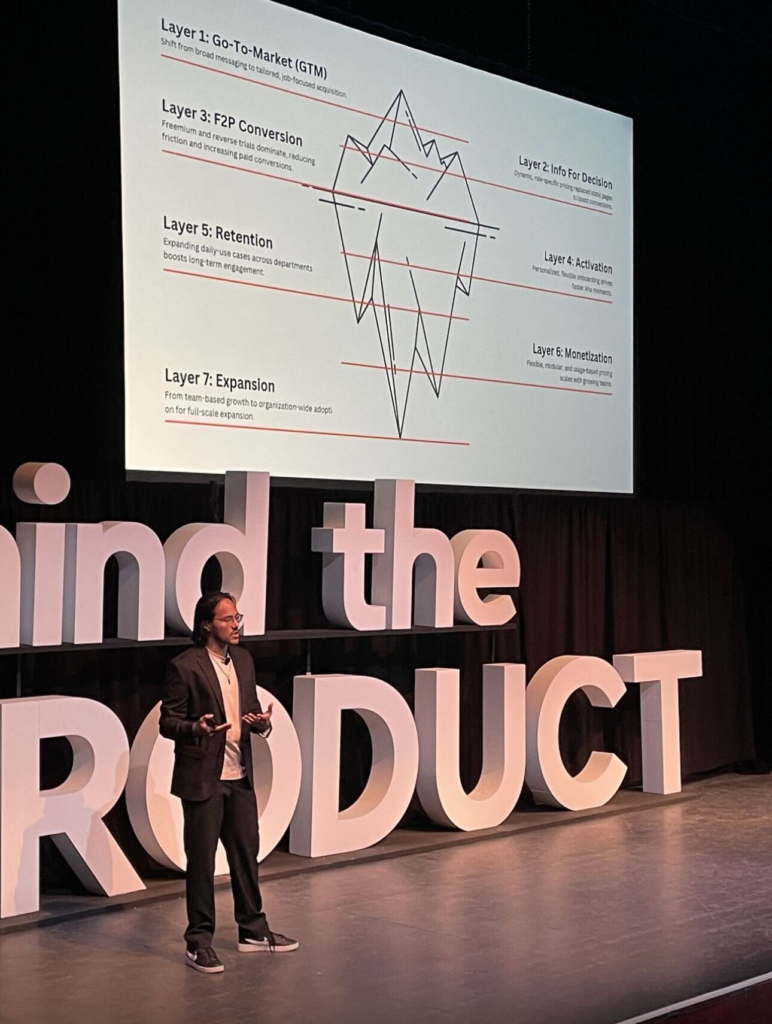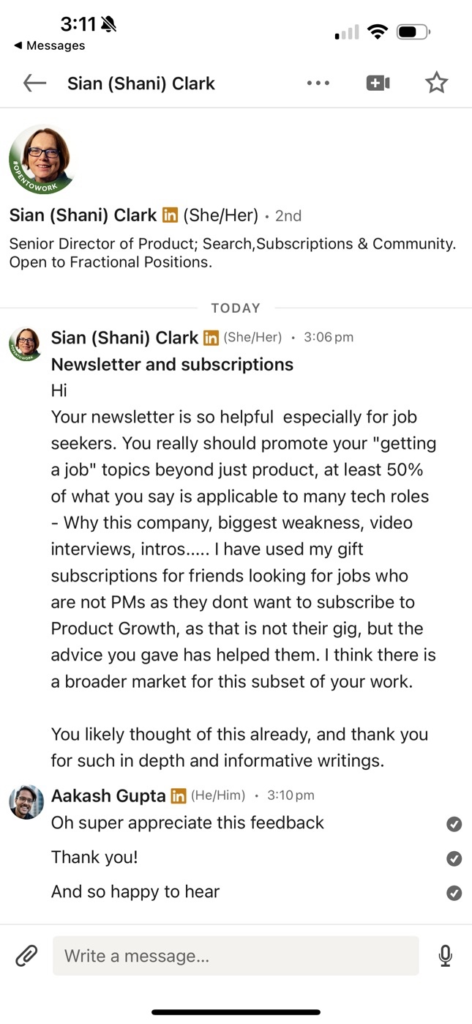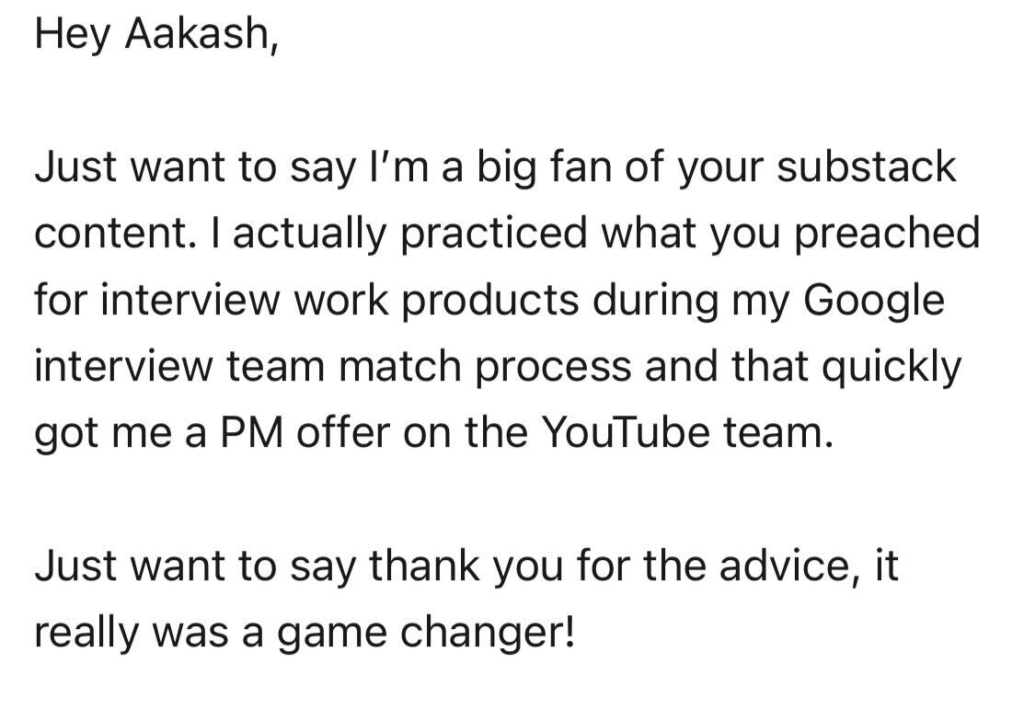I write a paid newsletter and host a free podcast focused on product management (PM) and growth.

I also travel the world doing Product Management events (check out my upcoming India Trip) and coach PMs (book me on Intro). I’ve even written a book, The Ultimate Guide to Getting a PM Job. And I do some advising.
About Me
So who am I?
I’m a product person who spent 15 years in the PM field, rising to VP of Product at a unicorn startup (Apollo.io which raised Series C at $1.2B valuation while I was there thanks to my help).
Nowadays, I run a product, growth, and careers media company. We have a small team putting on:
- Newsletter (40%)
- Podcast (40%)
- Events (10%)
- Book (5%)
- Advising (5%)
The newsletter and podcast are the second biggest in the world for product and growth. I have the world’s largest presence on LinkedIn and third largest on X.
Why Should You Care
If you’re a Product Manager…
- I break down PM skills 3x/ month
- I cover job searching tips 3x/ month
If you’re a product leader…
- I break down the best product strategies 1x/month
- I talk to the world’s best product leaders 2x/week
If you’re an aspiring product manager…
- I write the most, and most up to date, job searching PM content on the web
Where to Find Aakash Gupta, Product Leader
Aakash Gupta, Product and Growth leader can be found at:
Testimonials about Aakash Gupta, PM
Aakash Gupta, product (PM) and growth leader testimonials:

2. DM to Aakash Gupta Product Leader:

3. DM to Aakash:

5. Email to Aakash:

6. Reddit Post about Aakash:

7. Email to Aakash:
